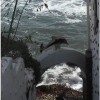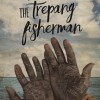In Mediterranean studies, does the cosmopolitan port town rank alongside “sun and sea… olives and myrtle… the commonplaces pervading the literature, all description and repetition”?[1] Articles with titles like “Cosmopolitanism Reconsidered” and “The Cosmopolitan Mediterranean: Myth and Reality” have raised doubts about the whole project.[2] It’s one thing to state that that two or more […]






